Have you ever been all set for an epic ride only to discover your motorcycle battery is dead? Trust me, I’ve been there, and knowing how to jump start a motorcycle can save your day. In fact, about 80% of motorcycle riders face this issue at least once, so it’s definitely a skill worth mastering. Jump-starting a motorcycle battery requires specific steps. Get informed by reading our guide on how to jump start a motorcycle battery.
Whether it’s a weekend road trip or your daily commute, dealing with a flat battery is frustrating. But don’t worry—most jump-start methods will have you back on the road in under 10 minutes, and all you need is the right equipment and know-how!
Can a completely dead motorcycle battery be jump-started?
Yes, a completely dead motorcycle battery can sometimes be jump-started, but it depends on the condition of the battery. If the battery is merely drained due to leaving the lights on or not riding the bike for an extended period, a jump start can work.
However, if the battery is old, damaged, or has dropped below a certain voltage threshold (typically around 10.5 volts), it may not hold a charge even after a successful jump start. In such cases, jump-starting might only provide a temporary fix, and the battery could die again shortly after.
It’s also worth noting that jump-starting a completely dead battery repeatedly can stress the electrical system of your motorcycle, potentially leading to more significant issues. If you find yourself frequently jump-starting your bike, it’s likely time to replace the battery.
A good rule of thumb is to regularly test your battery’s health and consider replacement every 3 to 5 years to avoid sudden failures. Motorcyclists need reliable gear for emergencies. Even with a bad alternator, you might need to jump-start your car. Learn what you need to know about jump-starting a car with a bad alternator.
Materials Needed:
Before you even think about jump-starting your motorcycle, let’s make sure you’ve got everything you need. Having the right tools on hand can save you a lot of time and frustration. Whether you’re using a portable jump starter or borrowing power from another vehicle, these materials will help get your bike back up and running in no time!
- Jumper Cables (about 12 feet long for easy reach between vehicles)
- Protective Gear (gloves and goggles to prevent injury from sparks or battery acid)
- Portable Jump Starter (optional but helpful, compatible with 12-volt batteries)
- Motorcycle or Car with a Charged Battery (for jump-starting when using jumper cables)
Methods to Jump-Start a Motorcycle
So, you’ve found yourself with a dead motorcycle battery. Don’t worry—there are four main methods to bring your bike back to life. Let’s dive into them, and I’ll walk you through each step.
1. Using Another Motorcycle
This is probably the most straightforward way to jump-start your bike if you’ve got another motorcycle nearby. The key here is making sure both bikes have 12-volt batteries, which is the norm for most bikes.
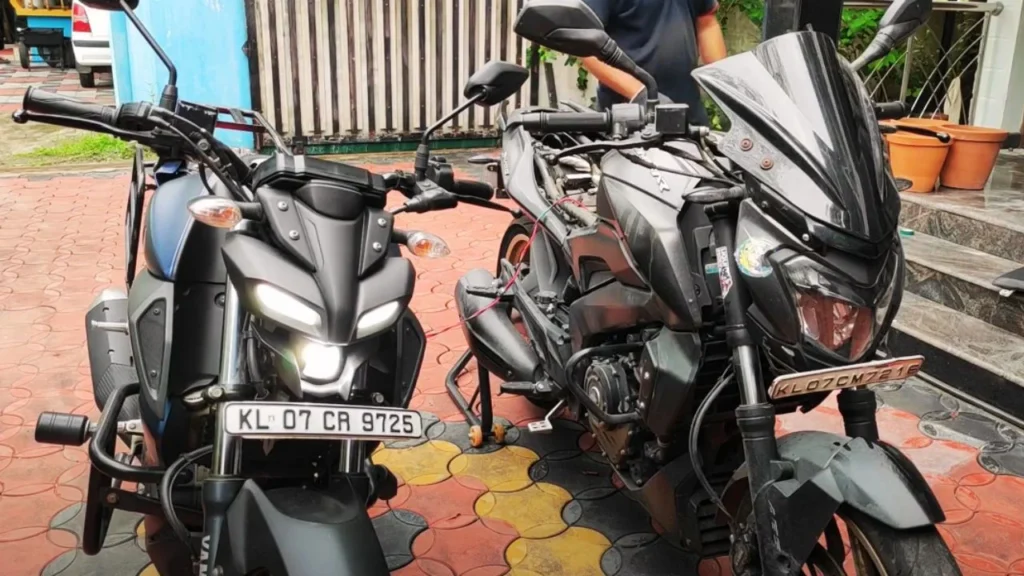
All you need is a pair of jumper cables and a working bike. Connect the positive terminals of both batteries first, then ground the negative cable to a metal surface on the dead bike. Within a minute or two, your motorcycle should fire up!
2. Using a Car
Now, if you only have access to a car, this method works too, but you need to be extra careful. Car batteries can have higher amperage than motorcycle batteries, so you’ll want to make sure the car stays turned off.
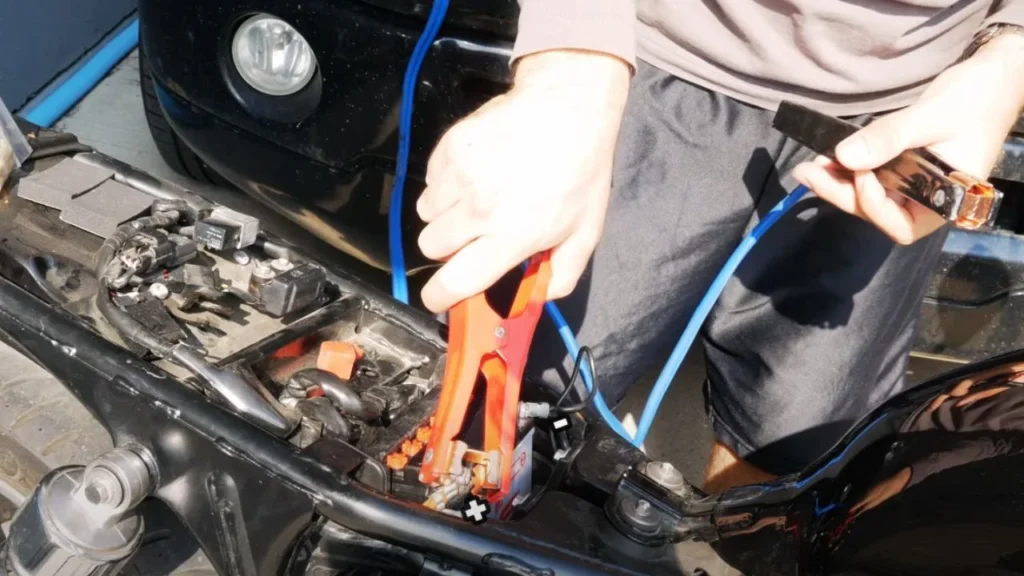
Follow the same process: positive cable to positive terminal, and ground the negative to a metal surface on the bike. Once connected, give it about 60-90 seconds, then try to start your motorcycle. It’s not as risky as it sounds if done properly, and it’s a quick fix to get you back on the road.
3. Using a Portable Jump Starter
If you’re the type who likes to be prepared, keeping a portable jump starter handy is a game-changer. These compact devices can give you a quick boost without needing anyone else’s help.
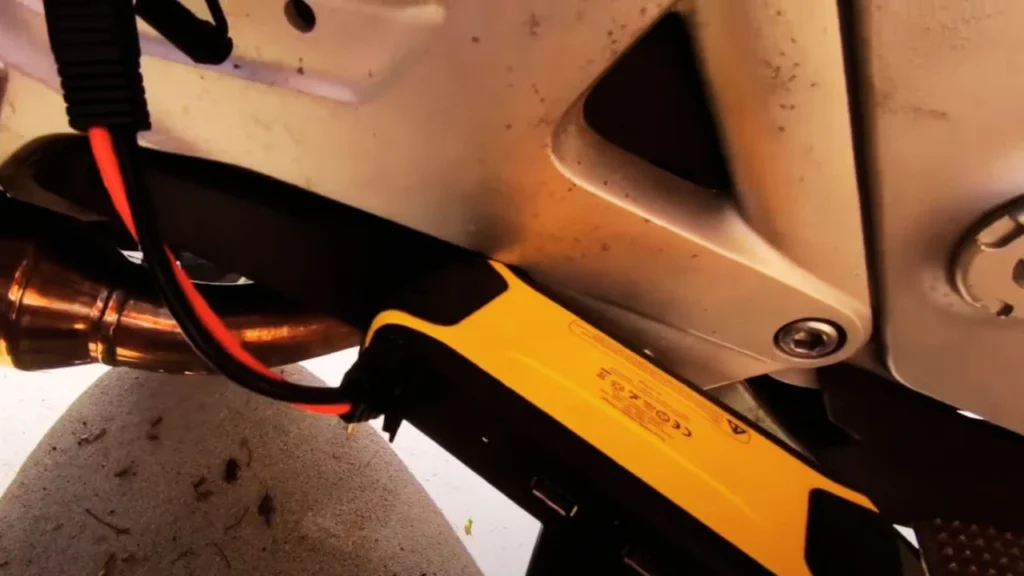
Simply attach the positive clip to your battery’s positive terminal, and the negative clip to a nearby metal surface. In under 2 minutes, your bike should roar back to life. I always recommend charging your jump starter after use to keep it ready for next time.
4. Push-Starting (Bump Start)
If you’re out of options, push-starting is your last resort. You’ll need a bit of muscle (or a slight hill). Put your bike in second gear, pull the clutch, and start pushing until you hit about 5 mph. Once you’ve got momentum, release the clutch and give the throttle a twist.
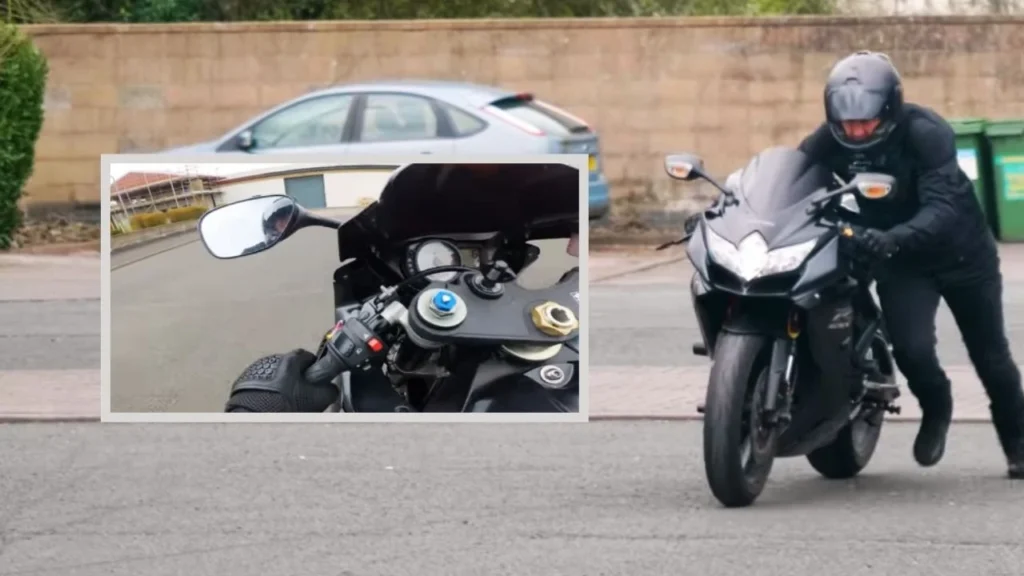
This method relies on engine compression, and with some luck, you’ll be riding off in no time. It’s a bit of a workout but totally doable! Looking for robust jump starters suitable for commercial use? Check out our list of the 6 best commercial jump starters in 2024.
Step-by-Step Guide to Jump-Start a Motorcycle with a Jump Starter
Let’s face it, being stuck with a dead battery is no fun. But with a portable jump starter, you can be back on the road in under 10 minutes! Here’s how you can jump-start your bike quickly and safely using this handy tool.
Step 1: Prepare the Jump Starter
Before you do anything, make sure both the motorcycle and the jump starter are off. Attach the red cable to the positive terminal of your motorcycle’s battery. If you’re unsure, the positive terminal is usually marked with a plus sign (+).

Step 2: Ground the Negative Cable
Now, connect the black cable (negative) to a solid metal part of your motorcycle—ideally, a piece that’s not painted. This step is crucial for grounding and preventing sparks, so don’t skip it!
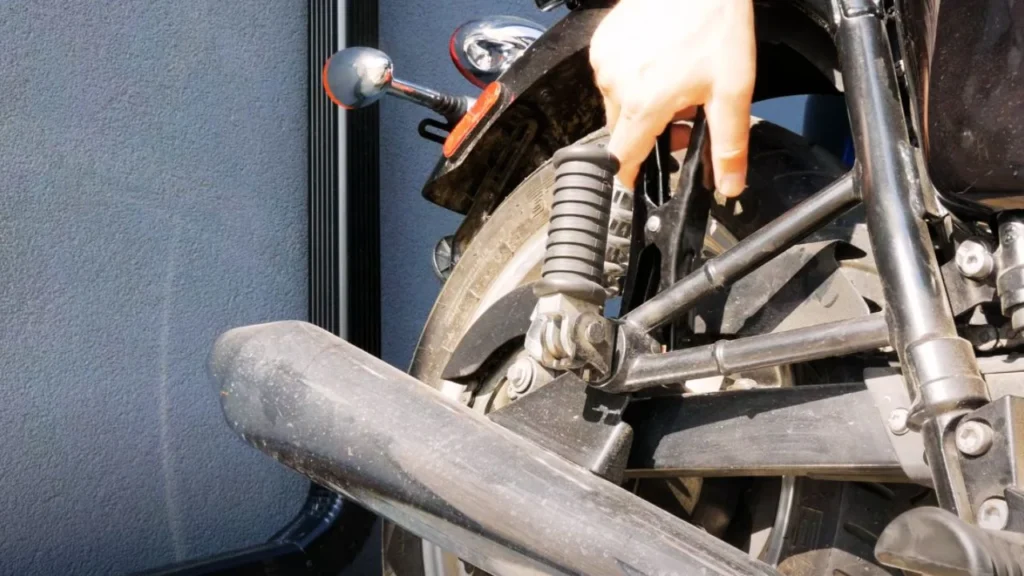
Step 3: Start the Jump Starter
Turn on the jump starter and give it about 2-3 minutes to send a charge to your bike’s battery. Be patient here; rushing could mean the difference between success and frustration!
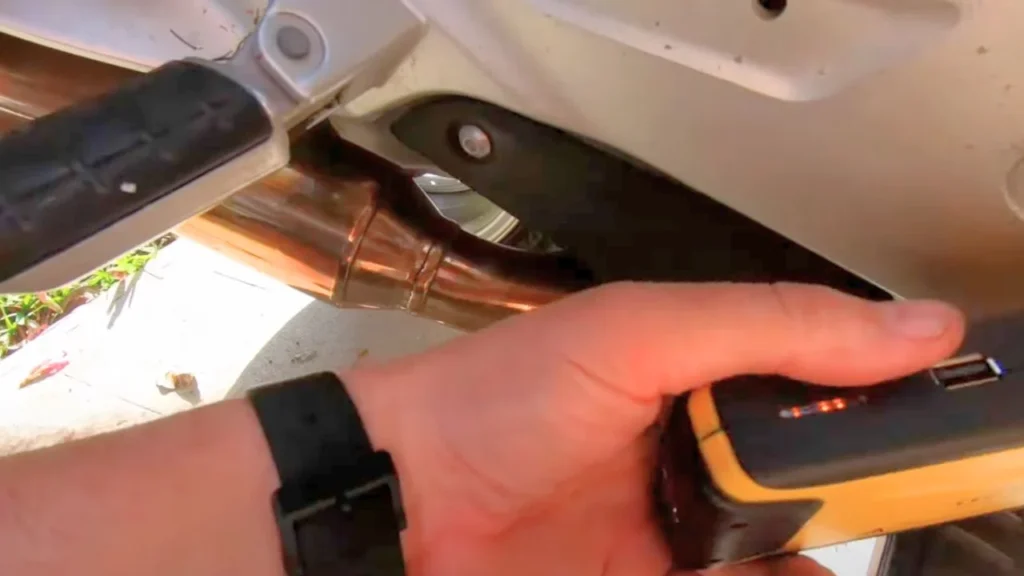
Step 4: Start the Motorcycle
With everything connected, turn your motorcycle’s ignition and try to start it. If it doesn’t start on the first try, don’t worry—wait 60 seconds, and then try again. Most bikes start within 2-3 tries using a jump starter.
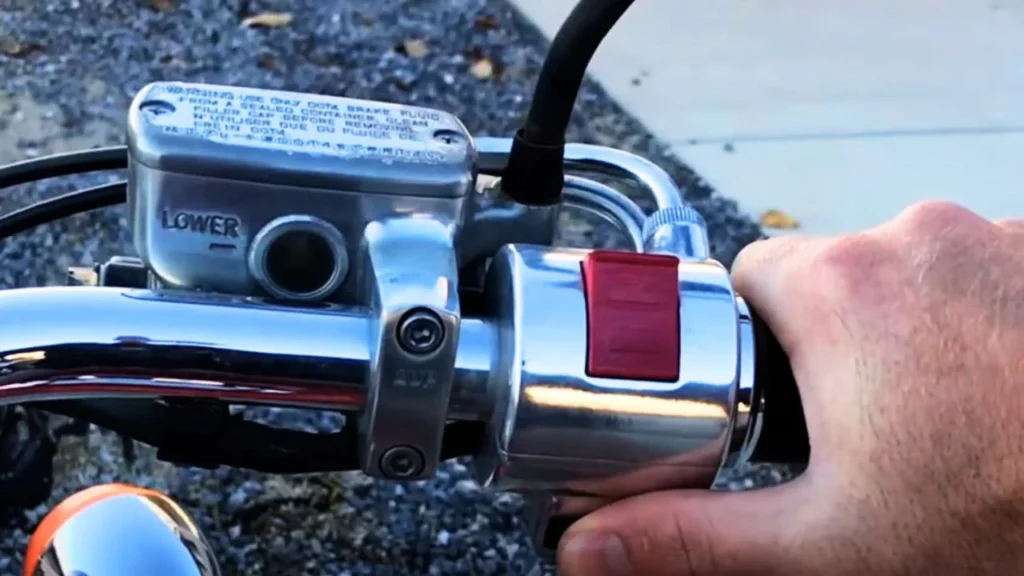
Step 5: Disconnect the Jump Starter
Once your motorcycle roars to life, it’s time to disconnect the jump starter. First, remove the negative cable, and then the positive. Always do it in this order to avoid sparks or short circuits.
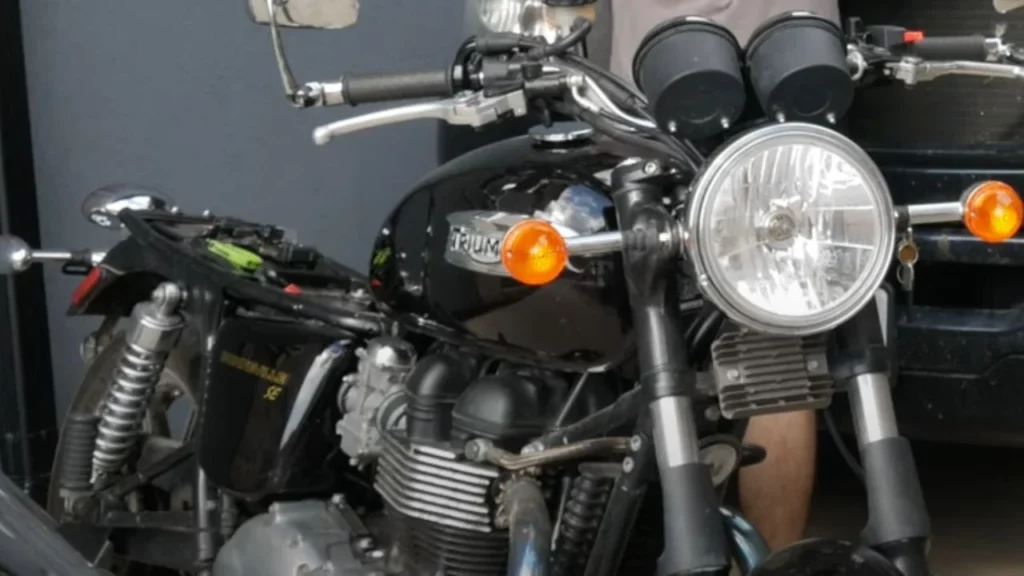
Motorcyclists need reliable gear for emergencies. Find the top picks in our roundup of the best jump starters for motorcycles.
Post-Jump Considerations
After getting your bike back on the road, there are a few key things to keep in mind. These steps will help ensure your battery is healthy and that you won’t need another jump anytime soon. Let’s go over a few quick checks to keep your ride smooth.
- Ride to Recharge: After jump-starting, ride for 15-20 minutes to allow your battery to recharge.
- Inspect for Corrosion: Check the battery terminals for any signs of corrosion or looseness. Clean any buildup with a mixture of baking soda and water.
- Test the Voltage: Use a multimeter to measure the battery’s voltage. A healthy battery should read between 12.6 and 12.8 volts.
- Monitor for Future Issues: If the bike struggles to start again soon, you might need further checks on the charging system or battery replacement.
- Get Professional Help: If problems persist, consider visiting a mechanic to avoid being stranded again.
Safety Guide: How to Jump Start a Motorcycle
When jump-starting a motorcycle, safety should be your top priority. Follow these steps to protect yourself, your motorcycle, and avoid damage to the battery or electrical system.
- Wear Protective Gear: Always wear gloves and safety glasses to protect yourself from potential sparks, battery acid, and any other hazards while working with electrical components.
- Inspect the Battery: Before attempting to jump-start, check the battery for physical damage like cracks, leaks, or bulging. If the battery is damaged, replace it rather than jump-starting to avoid further risk.
- Use the Right Equipment: Ensure your jumper cables or portable jump starter are in good condition. Frayed or damaged cables can be dangerous and lead to electrical shorts or sparks.
- Check Voltage Compatibility: Both the motorcycle and the assisting vehicle (another bike or car) must have the same voltage, typically 12 volts. Using mismatched voltages can lead to electrical overload and damage to your bike.
- Turn Off Both Vehicles: Before connecting the cables, make sure both the motorcycle and the assisting vehicle are turned off.
- Connect Cables Properly: Attach the red cable to the positive terminal of both batteries. Then, connect the black cable to the negative terminal of the good battery and ground the other end on a metal part of the dead bike’s frame.
- Keep Clear of the Engine: Stand clear of the motorcycle engine during the jump-start to avoid any accidental injury when the engine kicks on.
- Disconnect Cables in Reverse Order: Once the bike starts, remove the black cable from the grounded surface first, then remove the red cable from the positive terminals.
- Monitor Battery Performance: After the jump-start, let the bike idle for several minutes to stabilize the electrical system and recharge the battery.
- Follow the Manual: Always consult your motorcycle’s manual for model-specific guidelines on jump-starting.
Final Words
Jump-starting a motorcycle might seem tricky at first, but it’s actually simple once you know how. Whether you’re using another bike, a car, or a portable jump starter, the steps are straightforward. Just remember, it’s key to follow safety precautions and use the right tools.
In my experience, a portable jump starter is the fastest and easiest option. After you jump-start the bike, ride for at least 15 minutes to recharge the battery. Now, you know how to jump start a motorcycle like a pro!
